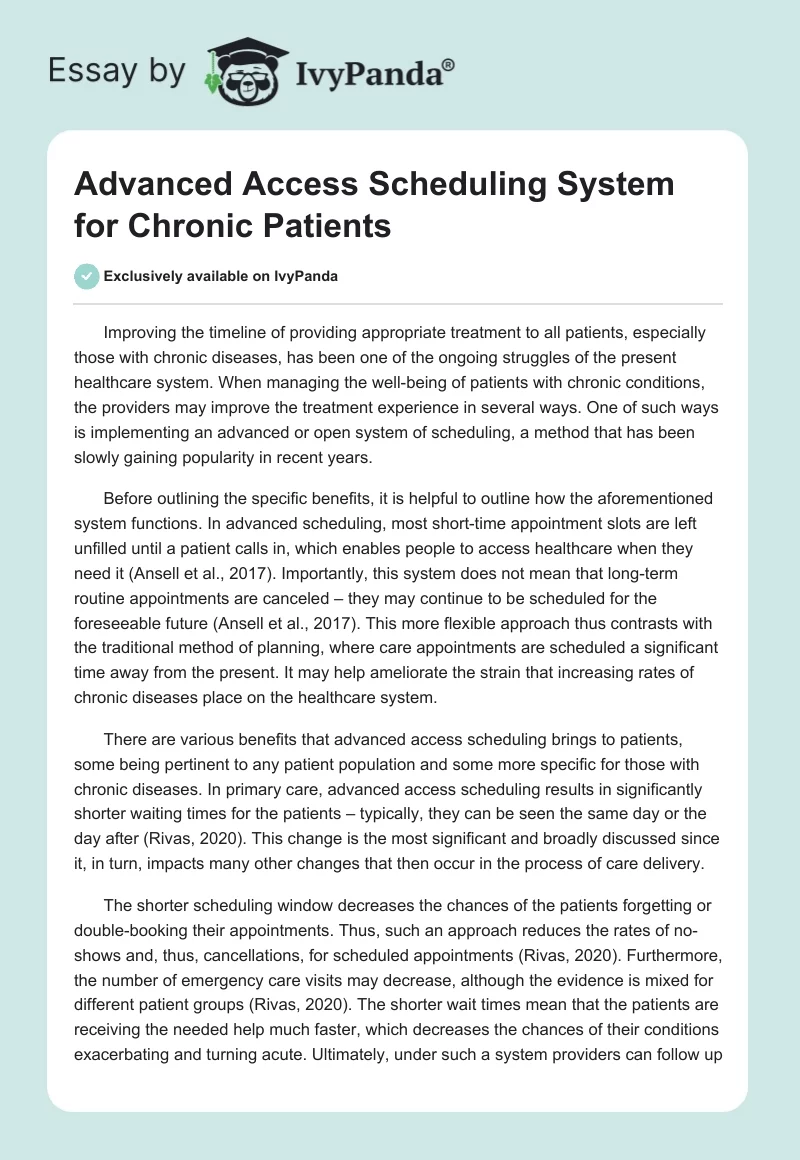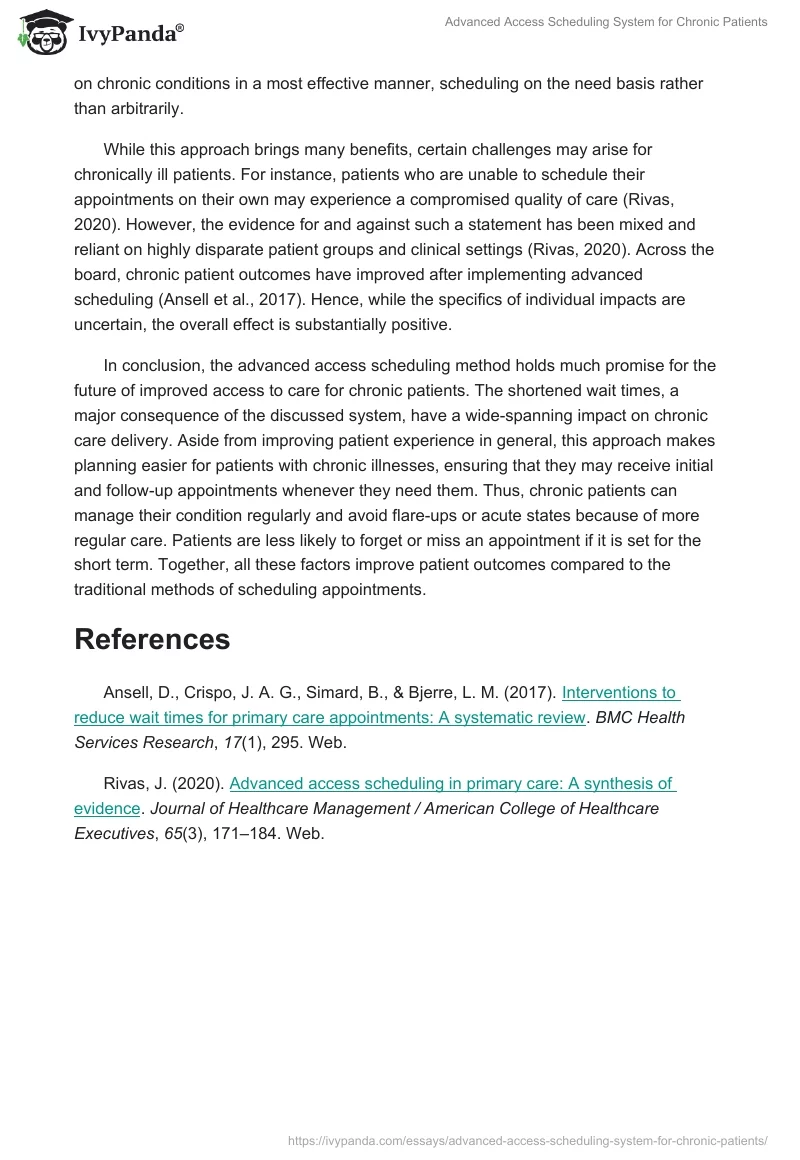Improving the timeline of providing appropriate treatment to all patients, especially those with chronic diseases, has been one of the ongoing struggles of the present healthcare system. When managing the well-being of patients with chronic conditions, the providers may improve the treatment experience in several ways. One of such ways is implementing an advanced or open system of scheduling, a method that has been slowly gaining popularity in recent years.
Before outlining the specific benefits, it is helpful to outline how the aforementioned system functions. In advanced scheduling, most short-time appointment slots are left unfilled until a patient calls in, which enables people to access healthcare when they need it (Ansell et al., 2017). Importantly, this system does not mean that long-term routine appointments are canceled – they may continue to be scheduled for the foreseeable future (Ansell et al., 2017). This more flexible approach thus contrasts with the traditional method of planning, where care appointments are scheduled a significant time away from the present. It may help ameliorate the strain that increasing rates of chronic diseases place on the healthcare system.
There are various benefits that advanced access scheduling brings to patients, some being pertinent to any patient population and some more specific for those with chronic diseases. In primary care, advanced access scheduling results in significantly shorter waiting times for the patients – typically, they can be seen the same day or the day after (Rivas, 2020). This change is the most significant and broadly discussed since it, in turn, impacts many other changes that then occur in the process of care delivery.
The shorter scheduling window decreases the chances of the patients forgetting or double-booking their appointments. Thus, such an approach reduces the rates of no-shows and, thus, cancellations, for scheduled appointments (Rivas, 2020). Furthermore, the number of emergency care visits may decrease, although the evidence is mixed for different patient groups (Rivas, 2020). The shorter wait times mean that the patients are receiving the needed help much faster, which decreases the chances of their conditions exacerbating and turning acute. Ultimately, under such a system providers can follow up on chronic conditions in a most effective manner, scheduling on the need basis rather than arbitrarily.
While this approach brings many benefits, certain challenges may arise for chronically ill patients. For instance, patients who are unable to schedule their appointments on their own may experience a compromised quality of care (Rivas, 2020). However, the evidence for and against such a statement has been mixed and reliant on highly disparate patient groups and clinical settings (Rivas, 2020). Across the board, chronic patient outcomes have improved after implementing advanced scheduling (Ansell et al., 2017). Hence, while the specifics of individual impacts are uncertain, the overall effect is substantially positive.
In conclusion, the advanced access scheduling method holds much promise for the future of improved access to care for chronic patients. The shortened wait times, a major consequence of the discussed system, have a wide-spanning impact on chronic care delivery. Aside from improving patient experience in general, this approach makes planning easier for patients with chronic illnesses, ensuring that they may receive initial and follow-up appointments whenever they need them. Thus, chronic patients can manage their condition regularly and avoid flare-ups or acute states because of more regular care. Patients are less likely to forget or miss an appointment if it is set for the short term. Together, all these factors improve patient outcomes compared to the traditional methods of scheduling appointments.
References
Ansell, D., Crispo, J. A. G., Simard, B., & Bjerre, L. M. (2017). Interventions to reduce wait times for primary care appointments: A systematic review. BMC Health Services Research, 17(1), 295. Web.
Rivas, J. (2020). Advanced access scheduling in primary care: A synthesis of evidence. Journal of Healthcare Management / American College of Healthcare Executives, 65(3), 171–184. Web.


